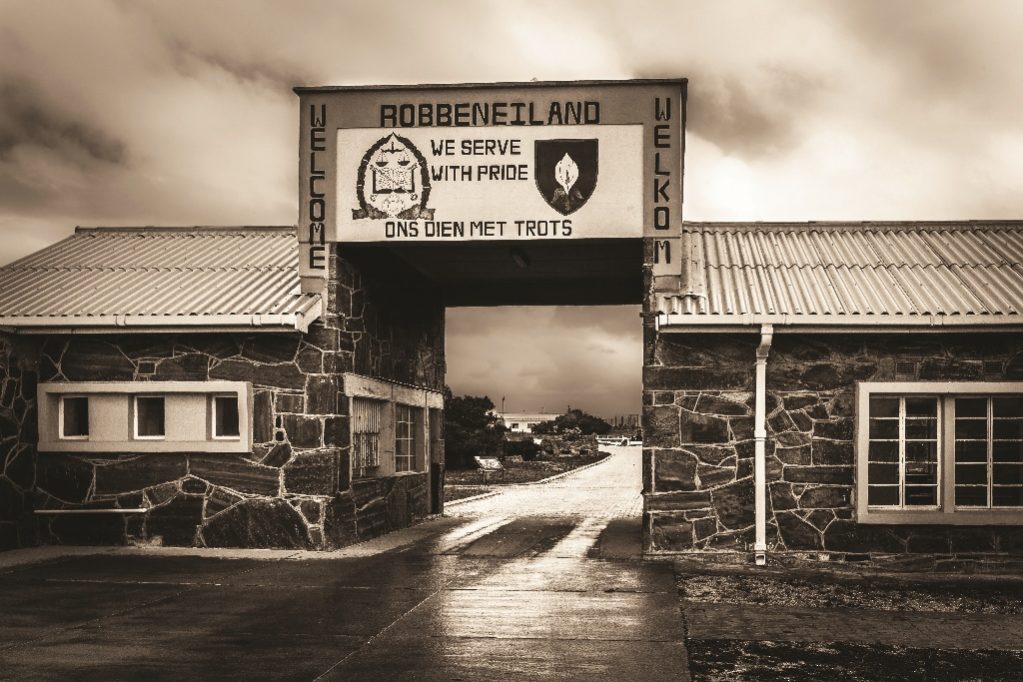Ahmed Kathrada looked frail, but fit and always on the move, as he trod the concrete of his former prison. In the so-called Rivonia Trial, Kathrada was accused number five alongside Nelson Mandela and eight others. They were charged with sabotage and faced death. Instead a young Kathrada and his co-accused were shipped to Robben Island to serve life imprisonment in 1964.

“We found out only later that life was to be life,” he says.
Kathrada spent 18 years of hardship and humiliation on Robben Island, followed by spells in other prisons, before he was released in 1990. Now 85, he is one of three survivors of the trial.
As South Africa celebrated 21 years of freedom, in April, Kathrada was back on the island wearing a black baseball cap with the words ‘Long Walk To Freedom’. A sign that this was a trip laden with symbolism. Upon disembarking on the ferry, he rejected a shuttle and walked for about 200 meters to the jail that robbed him of his youth.
As he spoke, standing on concrete patch prisoners used as a tennis court, he held his old cell key in his left hand; to his right was Christo Brand, the jailer who kept his eye on Mandela. Brand was 18 years old when he joined the prison as a warder, he’s now a manager at the island’s museum.
“We have our jailer among us,” smiled Kathrada.
Being a prisoner was no laughing matter. Alongside Kathrada was Vusumzi Mcongo, a former prisoner and now a tour guide on the island.
Mcongo told FORBES AFRICA the guard dogs would attack prisoners when they worked in the quarry. If the prisoners fought back they were punished. Officers thought more of the dogs than the humans they guarded.
“Black prisoners wore shorts because were regarded as boys and the Indians had long trousers,” says Mcongo.
Kathrada was back on Robben Island, now a World Heritage Site, because Google had launched a virtual tour application. It means anyone in the world can tour Robben Island for free.
This is a world away from the years that Kathrada and fellow prisoners spent on the island before they were released in the 1990s; they were still living in the 1960s.
“The technology revolution passed us by. The warden came to us and said ‘we received a fax from Pretoria, you are getting released’, after slight jubilation we asked ‘what is a fax?’” says Kathrada.
When Kathrada came out of prison he had never seen a motorway, nor a computer, not even an ATM.
“Not being able to see or interact with children for 20 years was possibly the most difficult thing to endure during my time on the island. There’s a poetic justice that children in classrooms all over world will now be able to visit Robben Island using this technology,” says Kathrada.
Kathrada, his friends called him Kathy, was a librarian in prison and earned an honours degree in history; he also became a father figure.
“There was a 15-year-old boy here, he was sentenced to 10 years. He did his matric here, his BA here, he started his B Juris here but completed it outside. Today, he’s the Deputy Chief Judge of the Constitutional Court – Justice Dikgang Moseneke – that was the boy,” says Kathrada proudly.
Long before Kathrada and his comrades were arrested, Xhosa Chief, Makana Nxele, was in chains on Robben Island. Nxele led a Xhosa regiment against the British in the Eastern Cape and was captured in 1819. In 1820, in an attempt to escape, Nxele swam from the island; guards caught him when he reached the beach at Blouberg, near Cape Town. The armed guards forced him to swim back. On the way back he drowned. You can google the rest.
